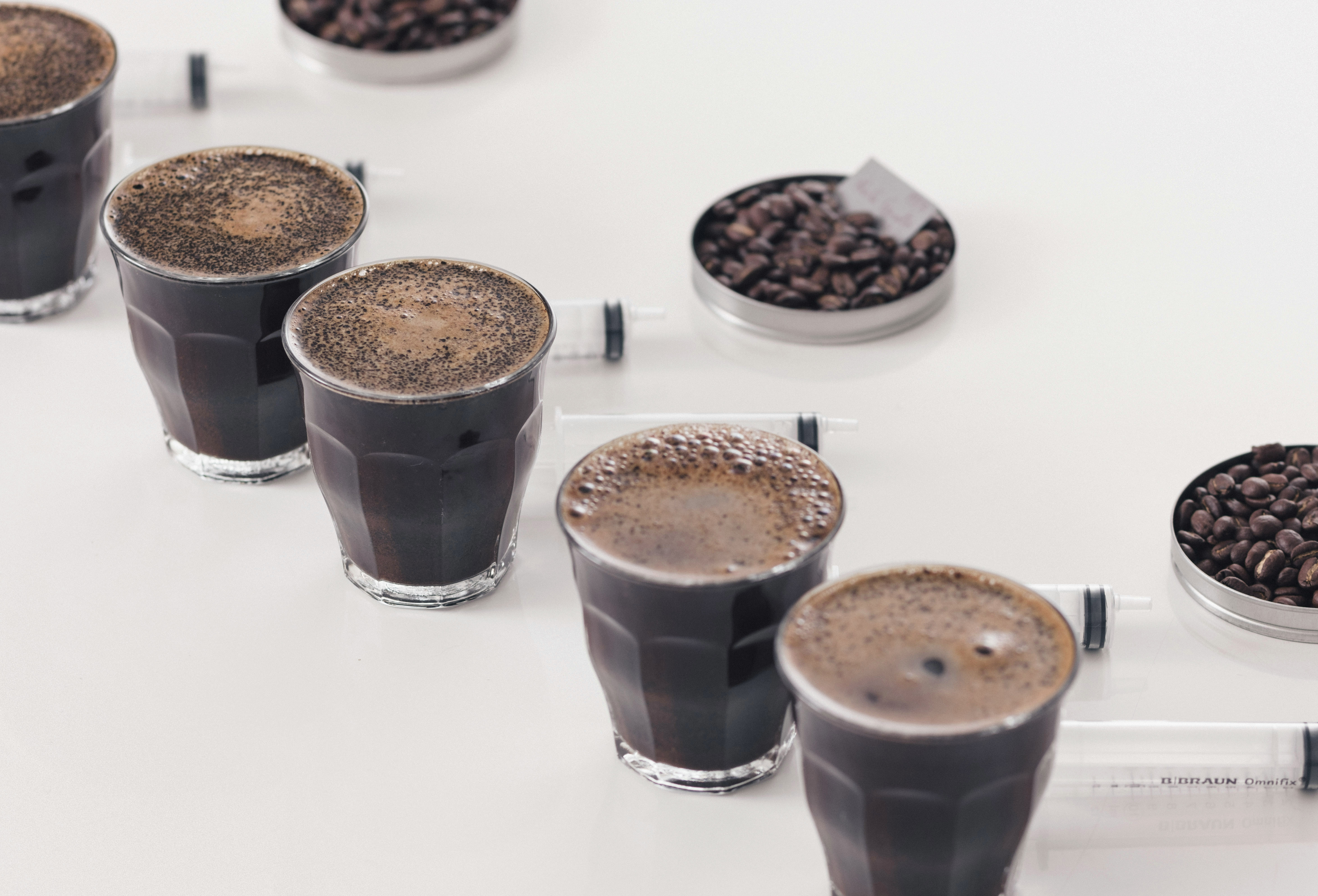The starting temperature for a cupping is a widely debated topic. Many cuppers, including Matt Perger (BH founder), suggest that we should use boiling water when cupping because this is a consistent starting point. Their point is that it is easy for a cupper to know exactly when the water has hit boiling point without using a thermometer. This means that if you are cupping in Bogota, for example, in the Andes mountains, you will use 92° C (198° F) water, whereas in London, at sea level, you will use 100° C (212° F) water. Because the boiling point of water is consistent at any given elevation, this system is more reliable than trusting a thermometer, and it is far more accurate than simply guessing.
Preheating ceramic, plastic, and glass cupping bowls can make a big difference to the final temperature because they are made of materials that have different rates of thermal conductivity and a different specific heat. This online calculator will help you work out what the starting temperature of your slurry will be after equilibrium is reached between the grinds, the cupping bowl, and the hot water. You can select between plastic, ceramic, glass, or stainless cupping bowls. Make sure you put the weight of the cupping bowls. We have added specific heat estimates for each of these materials. Be careful not to change the specific heat values in the spreadsheet unless you are sure you have precise numbers for you particular choice of cupping bowls.
In this video, (below) Matt shows you have to work out temperature equilibrium of your cupping bowl, your grinds and your brew water and how to test different brew ratios and different types of bowls.
In this video (below), we use our coffee-extraction app to show you the expected change in the rate of extraction if you use a different amount of water in each cupping bowl.
The important factor to consider is that the starting temperature you use should be adjusted based on the temperature equilibrium between the cupping bowl,
